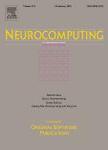版权所有:内蒙古大学图书馆 技术提供:维普资讯• 智图
内蒙古自治区呼和浩特市赛罕区大学西街235号 邮编: 010021

作者机构:Tsinghua Univ Grad Sch Shenzhen Dept Elect Engn Shenzhen Key Lab Informat Sci & TechShenzhen Eng Beijing Peoples R China UCL Dept Stat Sci London England
出 版 物:《NEUROCOMPUTING》 (神经计算)
年 卷 期:2019年第325卷
页 面:260-268页
核心收录:
学科分类:08[工学] 0812[工学-计算机科学与技术(可授工学、理学学位)]
基 金:National Natural Science Foundation of China [61471216, 61771276] Special Foundation for the Development of Strategic Emerging Industries of Shenzhen [JCYJ20170817161845824, JCYJ20170307153940960, JCYJ20150831192224146]
主 题:Finger identification Finger vein Finger dorsal texture Direction coding
摘 要:Finger identification is increasingly popular in recent years. In this paper, we propose a new finger identification system to acquire a hybrid pattern of dorsal finger vein and texture in a single image by using only one camera. It effectively reduces the cost and volume of the imaging device to acquire multi-modal patterns. The hybrid pattern of dorsal finger vein and texture is both storage-saving and calculation-saving. As there was no existing method specially developed for this kind of pattern, we propose a new feature extraction method called Polarized depth-Weighted Binary Direction Coding (PWBDC). We also establish a new database of such hybrid images of 210 finger samples. Experimental results demonstrate that the proposed system and feature are not only storage and calculation saving, but more importantly effective for identification. The proposed PWBDC method performs well on both the newly established database of hybrid images and a popular public database of traditional finger vein images, superior to many established and state-of-the-art methods. (C) 2018 Elsevier B.V. All rights reserved.